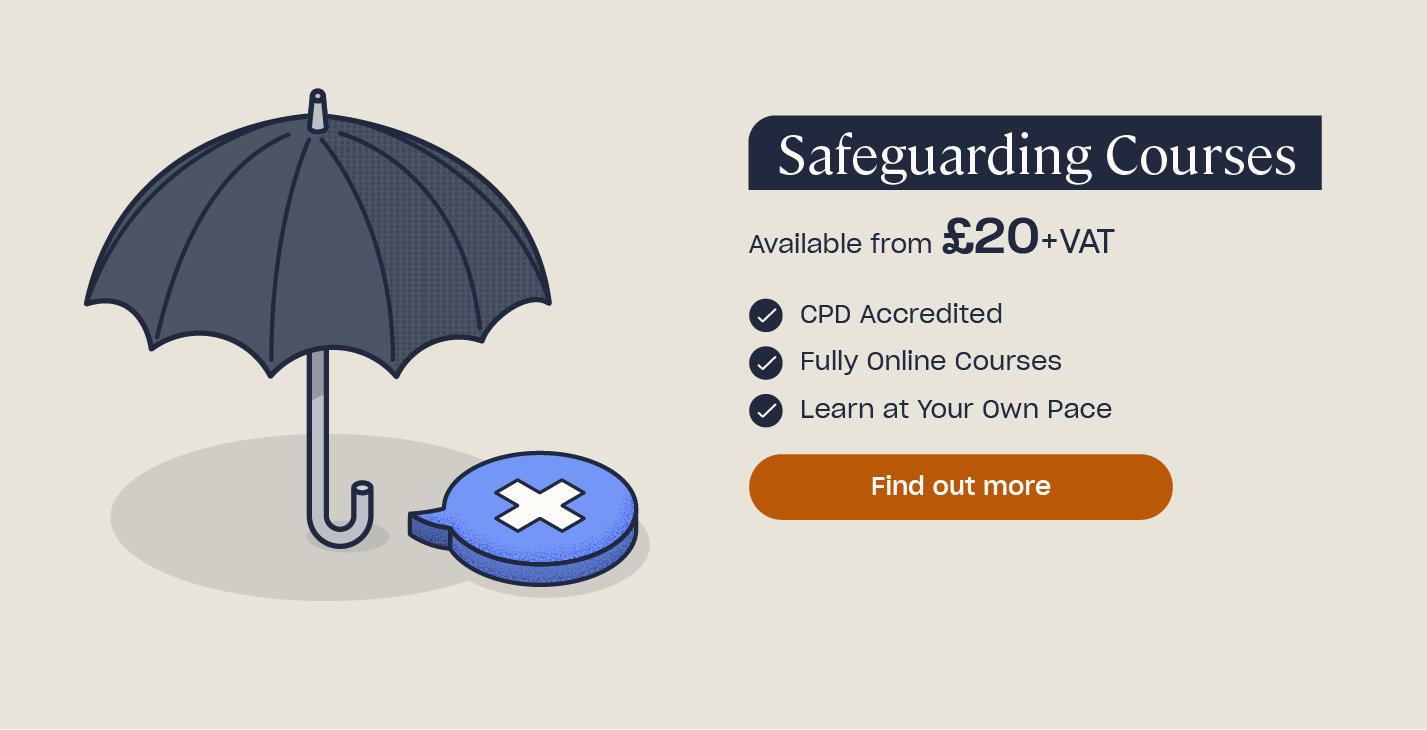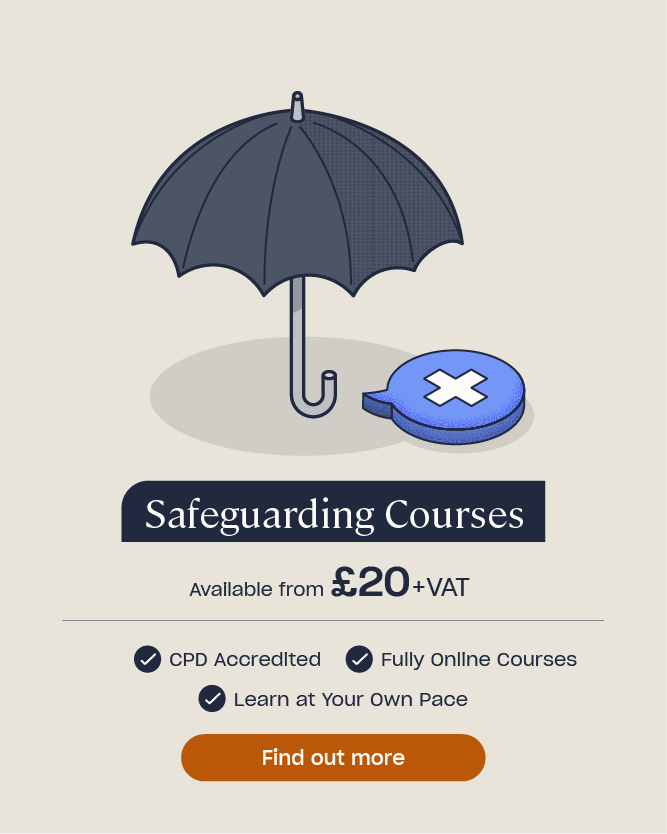What You Need to Know About Sextortion
Over recent years, cases of sextortion have been on the rise, particularly amongst children and young adults. For this reason, it’s vital that adults with safeguarding responsibilities have an awareness of the issue and the impact it can have. In this article, we’ll define exactly what sextortion refers to, the signs that you should look out for and how to deal with cases of sextortion as an educational professional or parent.
What is Sextortion?
The term ‘sextortion’ is a combination of the words ‘sex’ and ‘extortion’ and refers to a type of financially-motivated online blackmail. It’s also referred to as ‘revenge porn’ and ‘webcam blackmail’ and commonly involves the non-consensual sharing of ‘nudes’ or ‘semi-nude’ photos and videos in exchange for money.
Anyone can be a victim of sextortion but those most at risk are often young people aged 15 to 17 and young adults under the age of 30. Similarly, anyone can be a perpetrator of sextortion: whilst sextortion is commonly perpetrated by criminal gangs – and therefore by a stranger to the child or young person – it can also be carried out by someone the victim knows.

Amongst children and young people, sextortion occurs when criminals threaten to share intimate images, videos or information about the child or young person, unless they take a specific action. This action usually involves the child or young person paying money to the criminals to prevent them from sharing the sexual content, but it can also involve forcing the child or young person to do something else they don’t want to do, such as sending more intimate images to the perpetrator.
Sextortion is very distressing, upsetting, embarrassing and stressful for the child or young person experiencing it, and the perpetrators usually prey on these feelings, knowing they can get more out of the child or young person because they’ll be too ashamed to report what’s happening to them.
As someone with safeguarding responsibilities, whether you’re a parent, carer, teacher or another educational professional, it’s important to recognise how a victim of sextortion might be feeling and understand why they may not be willing to speak out.
Is Sextortion a Crime?
In the UK, it’s a criminal offence to take, make, circulate and possess explicit images of children under the age of 18, including ‘pseudo images’ of children (such as photos created using AI). Therefore, criminals who possess and share intimate images in sextortion cases are committing a crime.
Sextortion is a type of child sexual abuse and child sexual exploitation and perpetrators can be prosecuted under both the Protection of Children Act 1978 and the Criminal Justice Act 1988. Because of this, Europol suggests that the term ‘sextortion’ doesn’t adequately define the type of abuse experienced, and recommends it’s instead referred to as ‘online sexual coercion and extortion of children.’
Amongst young adults (those over the age of 18), sextortion is a crime under the revenge porn legislation contained in the Criminal Justice and Courts Act 2015. Under this Act, it’s a criminal offence to share intimate images or videos of someone, either on or offline, without their consent.

Signs of Sextortion
It’s important to understand that children and young people are very likely to keep information about sextortion a secret, because they feel afraid, ashamed and embarrassed by what is happening to them. Even if you’re the child’s parent or favourite teacher, they’re unlikely to disclose what has happened. This is why it’s so important to have an awareness of the signs of sextortion to look out for.
Sextortion commonly begins online, as this is somewhere that the perpetrator can target a child or young person without anyone else knowing. They may use a fake identity and befriend the child or young person, sometimes convincing them that they’re in a relationship, before coercing the child or young person into chatting in a sexual way or sharing intimate images.

The child or young person may truly believe that they are talking to someone their own age and to someone who is genuinely interested in them, then share intimate images or videos because they trust the person. Alternatively, they may share images because they’re being threatened or promised something in return by the person they’re talking to.
For parents, carers and educational professionals, a few signs of sextortion to look out for include:
- A child or young person suddenly having a new boyfriend/girlfriend, who they met online or on a social media app (like Snapchat, Instagram, TikTok, Telegram and Kik).
- The child or young person appearing withdrawn or worried and not being their ‘usual self’.
- The child or young person may stop using their phone as much so as to avoid messages, or they might appear worried when a message pops up.
- The child or young person may delete certain apps from their phone to try and avoid the source of communication. For example, as a parent, you may notice they’ve disappeared from your WhatsApp contacts list.
In the UK, the National Crime Agency’s child exploitation and online protection (CEOP) team recently issued an alert for teachers in order to help them spot the signs of sextortion amongst their students, after global reports of the crime significantly increased. This guidance is useful for both teachers and parents, as it helps you to spot the signs of abuse and know how to talk to children about sextortion.
Looking to Learn More?
If you work in education, our range of online Courses for Teaching and Education will help you to build on your safeguarding children knowledge. In particular, our Online Safety & Harms and Harmful Sexual Behaviour courses will provide you with essential further information on how to recognise, respond to and report child protection concerns.
Sextortion Cases
In 2023, the Revenge Porn Helpline reported a significant increase in the number of reports of sextortion it received. Over the course of the year, almost 19,000 sextortion cases were reported to the helpline, which is an increase of 106% on the year before. The helpline also revealed that it has removed over 305,000 non-consensually shared intimate images online since launching in 2015.
A recent sextortion case that made the news is that of Murray Dowey, a 16-year-old boy who took his own life in December 2023 as a result of being a victim of sextortion. The teenager from Scotland had been targeted by criminals and duped into thinking he was talking to a teenage girl on social media. The ‘girl’ shared an intimate image with Murray who responded by sharing an intimate image of himself. At that point, it was immediately revealed that he’d been talking to criminals, who proceeded to ask Murray for money and threatened to share the intimate image with all his contacts if he didn’t pay up.
Sadly, Murray’s case is not uncommon and the number of sextortion cases in the UK, amongst teenage boys in particular, continues to rise.
How to Deal with Sextortion
If you discover that a child or young person in your care is a victim of sextortion, there are some key steps to follow that will help to keep the child safe. The National Crime Agency and British police recommend that you:
- Stay calm and remember that help and support from the police is available.
- Stop contact with the blackmailer immediately.
- Do not pay the person any more money and block their account to prevent further messages.
- Keep hold of anything that could be used as evidence and don’t delete messages. You could take screenshots of conversations, save messages and images and make note of any usernames, email address, URLs or bank details used by the perpetrator, as this will all aid a criminal investigation.
- Report the situation to the police by calling 101, online or by using the (CEOP) Safety Centre if you’re under 18.

Parents and teachers can also help to support children and young people by educating them on how to avoid falling victim to sextortion. A few examples of tips to deal with sextortion that you can pass onto the young people you know are as follows:
- Be open about the topic so that children know it’s OK to talk about it, discuss their concerns and can recognise the signs of sextortion before it happens.
- Remind children and young people to review their privacy settings on social media to ensure only their immediate friends can view their personal information and contacts.
- Demonstrate how to end a conversation and block a contact on messaging platforms, and explain that it’s OK to block someone if they don’t know who they are or feel uncomfortable at any time.
- Encourage children and young people to report any worries they have, whether that’s to you, someone else they trust or online via the CEOP website. Ensure that all children know how to report their concerns and where to get support.
- Teach the children and young people you know about what a healthy relationship looks like.
- Explain that most social media sites have rules about sharing intimate content, so the material can be removed if you get in touch with them. There’s also a page on the Childline site called Report Remove which can be used by young people to confidentially report images and videos.
Sadly, cases of sextortion are unlikely to decrease, as social media and messaging platforms continue to become more and more commonplace, particularly amongst the younger generations. As a parent or educational professional, the risks presented to children online can be frightening but, with the right knowledge, you can empower children and young people to recognise the dangers and respond appropriately if they feel worried or concerned.
Further Resources:
- Safeguarding Courses
- How to Respond to Harmful Sexual Behaviour in Schools
- What is Contextual Safeguarding & Why is it Important?
- Confidentiality in Childcare











